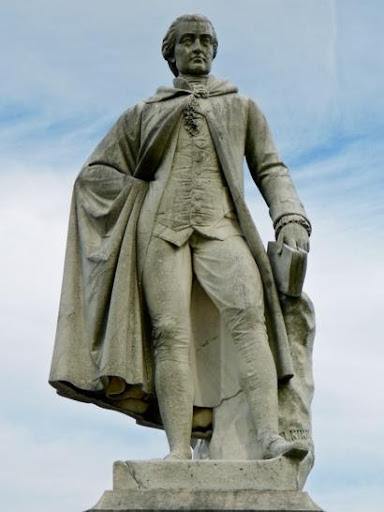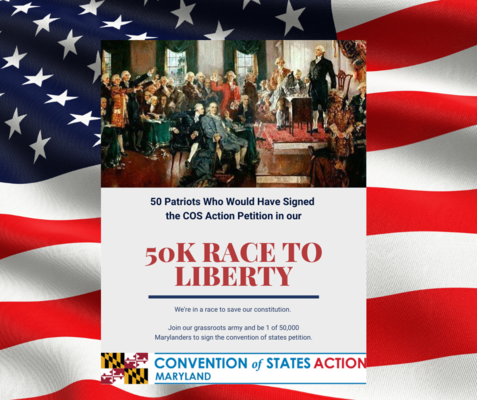The four Maryland signers of the Declaration of Independence were Thomas Stone, Samuel Chase, Charles Carroll, and William Paca. While not as glamorous as their counterparts from other states such as Thomas Jefferson, Benjamin Franklin, George Washington, and James Madison, they have this one unique commonality - they were all Marylanders, born and bred, and they represented the Maryland colony at the Continental Congress in Philadelphia.
If you need some kind of memory trick to remember the four Maryland signers of the Declaration of Independence, just remember what every Maryland history teacher will tell you: Paca Chased Carroll with a Stone.
Charles Carroll (1737-1832) is the first to be featured in our three part series on the Maryland signers.

Although born in Annapolis, Charles Carroll was sent to France at age 11 to continue his schooling and went on to study law in Europe before returning to the colonies in 1765. He was unable to enter politics because he was Roman Catholic, a discriminatory practice which goes back to Maryland’s origins in the 1600s.
However, his interest in the developing movement for Independence led him to publish a series of articles, which gained notoriety and ushered in his election to the Maryland Committee of Correspondence. Such committees, organized by Samuel Adams, were established in each of the colonies to influence the establishment of the First Continental Congress.
Despite his Catholic faith, Carroll was eventually asked to be a delegate to the Continental Congress. He arrived too late to vote on the issue of Independence; however, he added his signature to the Declaration of Independence.
Elected to the U.S. Senate after the Revolutionary War, Carroll resigned that post in favor of serving in the Maryland State Senate due to a law passed in 1792 that prohibited citizens from simultaneously serving in both their state senate and the U.S. Senate.
An unusual story was circulated about Carroll’s bravery concerning his signature on the Declaration of Independence. To sign that document was risky since it drew the attention of King George III and would be considered treason. Those signers with common names, such as John Morton, could be more anonymous than their counterparts with unusual names, like Button Gwinnett. When his comrades in Congress pointed out that Carroll had very little risk in signing, he boldly added “of Carrollton” at the end of his signature, which muzzled his mockers. Truth be told, early documents showed that Carroll had been signing his name that same way for years, so the story is likely to be more myth than fact.
These early Maryland settlers were Patriots who gave their time and talents to usher in self-governance and freedom from British rule. Today, though we do not mount a standoff at the Lexington Green or the Concord Bridge, we do engage in wrestling back our independence from a central government who increasingly seeks to overtake our liberties and impose its unwelcome agenda upon the will of the people.
They were patriots — ordinary people like you and I who threw down the gauntlet to stand against tyranny. As their descendants, we must do the same, or we will be surrendering our rights as United States citizens to live within a society of fair elections, fair trade, fiscal responsibility, and independent statehood.
Just as they put their pens to parchment at the signing of the Declaration of Independence, so too must we exercise our electronic pens and declare our support to call for a Convention of States. Won’t you please sign the petition and bring us to 50,000 signatures towards our Maryland resolution?
Citizens concerned for the future of their country--under a federal government that's increasingly bloated, corrupt, reckless, and invasive--have a constitutional option. We can call a Convention of States to bring power back to the states and the people, where it belongs.
Be a 21st Century patriot and 1 of 50,000 Marylanders to join our Race to Liberty and sign the petition at Convention of States Action today.






